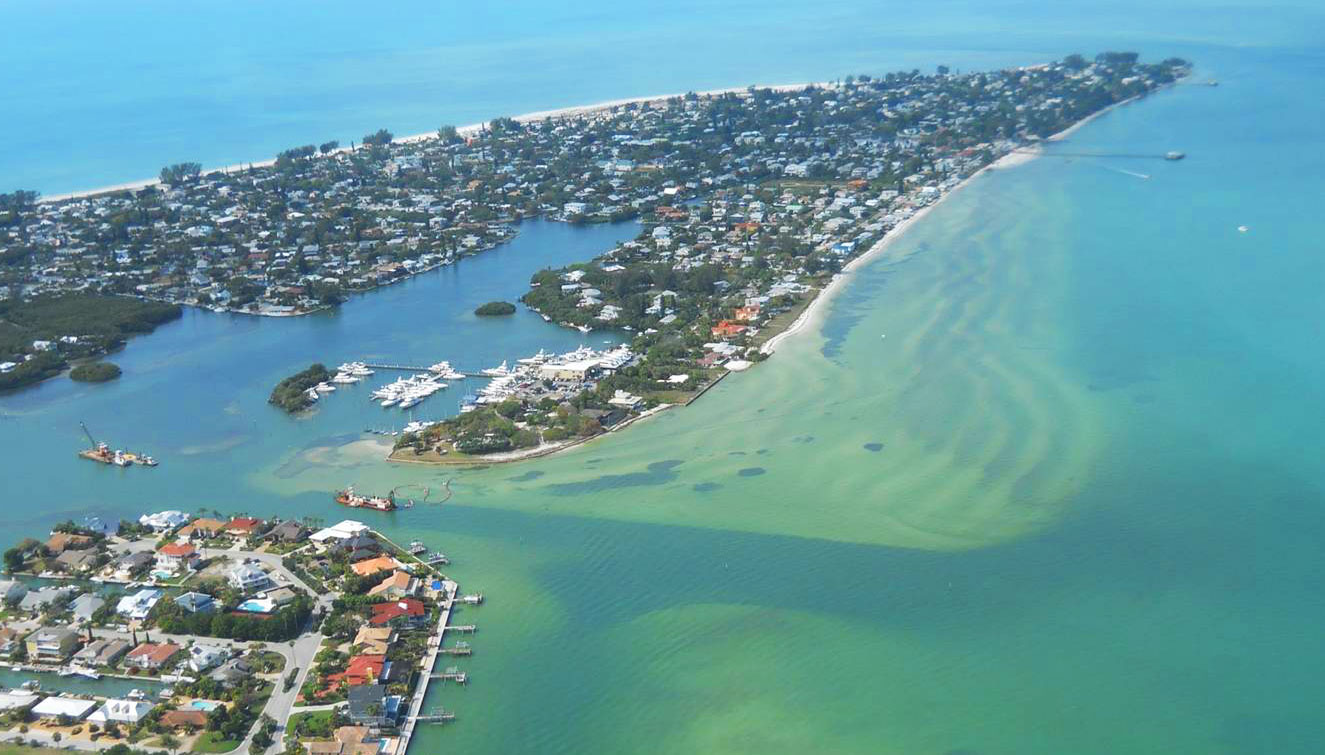Boating isn’t just our favorite pastime, it’s a major—we’re talking billions of dollars—economic engine for Southwest Florida. And a lot of effort is required to keep our waterways navigable for us boaters. That’s where the West Coast Inland Navigation District (WCIND) comes in, with their mission to preserve and enhance the commercial, recreational, and ecological values of District waterways. We recently sat down with WCIND Executive Director Justin McBride to get the inside scoop.

GBF: What’s the easiest way to describe what WCIND is?
JM: We are DOT for the water. We don’t control water quality or quantity, that’s the U.S. Army Corps of Engineers (ACOE) or water management districts and DEP. What we’re concerned with is making sure there’s enough depth for the channels that people recreate and boat in.
GBF: Can you give us a little history on the WCIND?
JM: It was established in 1947 to work with the ACOE to build the Gulf Intracoastal Waterway (GIWW), the 152-mile long waterway that connects the Caloosahatchee and Anclote rivers. When the GIWW was completed, the WCIND started assisting counties with navigation and maintenance projects.
GBF: So, what counties and what kinds of projects does that cover?
JM: WCIND covers Manatee, Sarasota, Charlotte and Lee counties and, basically, we help county and local governments maintain public navigation channels, boating access facilities, piers and special structures, even waterfront parks. Every dollar from WCIND supports most things that you can enjoy by boat or that impact boating.
GBF: Speaking of dollars, where does WCIND get its funding?
JM: We are a multi-county special taxing district, which means we get our funds from property taxes. Right now, we’re at $0.0395 per $1,000 of taxable value, so the average property owner in the counties pays less than $2 annually to WCIND. We’re operating well below what our maximum allowed taxing rate could be. We have very low overhead, we only have four staff members.
GBF: How do you determine what projects to fund?
JM: At a regional level, I take direction from my Board on what priorities the District works towards. We then work cooperatively with the ACOE, US Coast Guard, and the counties to prioritize work tasks. At the county level, most counties have a citizen advisory board that works with county staff to identify needed projects and prioritize them for WCIND funding.
GBF: Are there any major projects in the works?
JM: A big project we have right now is a federal project with the ACOE to dredge the Venice Inlet. That’s another thing we do is we work with the area’s federal representatives in Washington DC and help secure Federal funding for navigation projects. We recently secured funds from the Federal Government and with that the Corps created the Dredge Readiness Operational Program. It’s a tool that identifies shoaling rates and predicts which areas of the Federal Channel may need to be prioritized for future work. In some instances, the solution was to simply move channel markers, which saved taxpayers millions, where others require dredging.
We also now have a Dredge Material Management Plan. We did a study to determine where to place spoil material from future dredging projects and now have a 50-year capacity plan.
GBF: Does WCIND play a role in how natural disasters affect our waterways?
JM: We’re mostly here as a resource for counties. We recently created a storm response fund, so we have dedicated funds put aside for that. In some ways WCIND is more nimble and can respond faster to assist the counties with debris removal, dredging and other navigation issues related to storm response.
GBF: What are the biggest challenges facing our waterways right now?
JM: The first is water quality. Unfortunately, WCIND doesn’t have the statutory ability to control that. What we can affect is the public access, and that would be the second challenge—the increasing number of people in Florida and making sure there is adequate public access. Do we have the right number of boat ramps? Are the channels adequate to handle the amount of traffic? We need to maintain the waterway infrastructure we currently have to the best of our abilities.
GBF: Most people are unaware of WCIND, so what kind of misconceptions have you encountered?
JM: The most common one is people think we can dredge the canal behind their house. WCIND funds can only be used for canals deemed to be public. That means there needs to be a public boat ramp, a business that sells fuel, restaurants or hotels with dockage, something that has boat access and is open to the public, at their terminus.
GBF: So private canal dredging aside, if a boater or an owner of a boating-related business on the water has questions or something they want to accomplish, what should they do?
JM: They can go to their county representative or contact WCIND directly. If they have a question on how something works, they can reach me at [email protected] or 941.485.9402.
Special thanks to Justin McBride, WCIND Executive Director, for shedding some light on all the work being done to keep our waterways navigable.
The projects WCIND supports are important to boaters and non-boaters alike. In 2016, there were 110,350 boats registered in Southwest Florida alone—that means our area accounts for 12% of all registered vessels in the entire state. So next time you’re out on the water, keep in mind the many boating, fishing and beach-oriented projects that make our beloved SWFL boating lifestyle possible.

